
“To experience a film by Japanese B-movie visionary Seijun Suzuki is to experience Japanese cinema in all its frenzied, voluptuous excess.” — Manohla Dargis
‘In a career spanning nearly five decades, Seijun Suzuki amassed a body of work ranging from B-movie potboilers to beguiling metaphysical mysteries. On the occasion of the publication of Tom Vick’s new book Time and Place are Nonsense: The Films of Seijun Suzuki, the Film Society presents a retrospective of Suzuki’s films, ranging from his greatest hits to a selection of seldom-seen rarities.
‘Suzuki first became famous when he was fired by Nikkatsu Studios for making films that, as he put it, “made no sense and made no money.” But it was his freewheeling approach and audacious experimentation that gained Suzuki a cult following in Japan and abroad. Suzuki’s job at Nikkatsu was to make B movies out of scripts that were assigned to him. In the mid-1960s, with dozens such films under his belt, Suzuki’s restlessness began to come through as he and his collaborators, art director Takeo Kimura and cinematographers Shigeyoshi Mine and Kazue Nagatsuka, began experimenting with the assigned material. These films established Suzuki as a stylistic innovator working within—and rebelling against—the commercial constraints of B-movie studio work.
‘In the 1980s, Suzuki reinvented himself as an independent filmmaker. Freed from the commercial obligations of studio work, he elected to indulge his passion for the Taisho era (1912–26), a brief period of Japanese history that has been likened to Europe’s Belle Époque and America’s Roaring Twenties. Though not linked by plot, these three films—Zigeunerweisen, Kagero-za, and Yumeji—embody the hedonistic cultural atmosphere, blend of Eastern and Western art and fashion, and political extremes of the 1920s, infused with Suzuki’s own eccentric vision of the time
‘In the 1990s, a traveling retrospective brought long-overdue attention to Suzuki’s films in the United States and Europe. A new generation of devotees, most notably Jim Jarmusch and Quentin Tarantino, praised Suzuki in the press and referenced his work in their films. Perhaps inspired by this newfound attention, Suzuki returned to filmmaking after another decade-long absence, making two films—Pistol Opera and Princess Raccoon—that look back on his career while advancing it with new technology.’ — Film Inc.
____
Stills
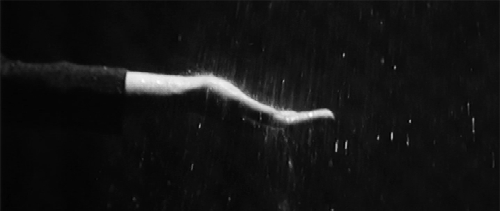

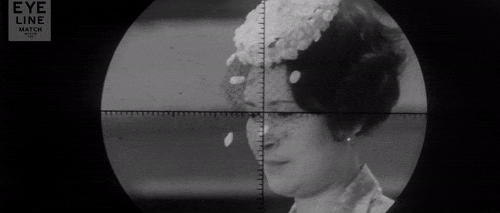

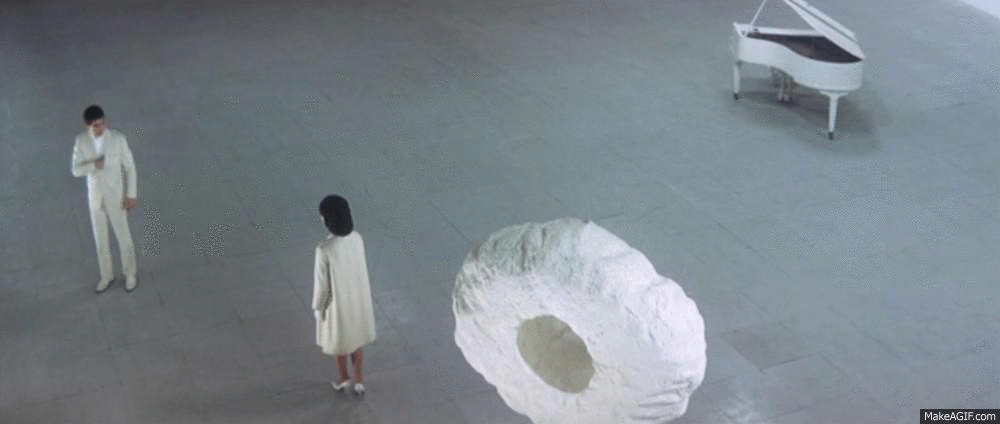
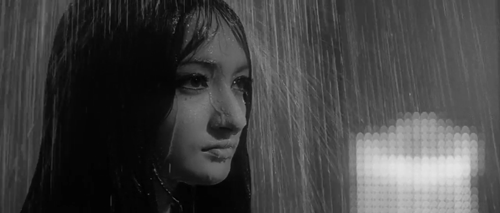
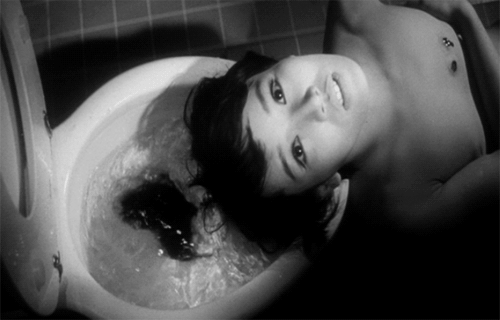

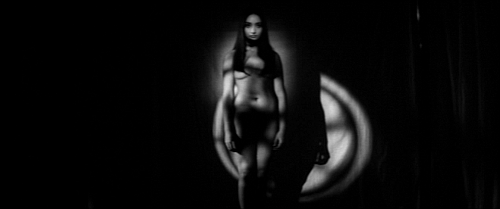

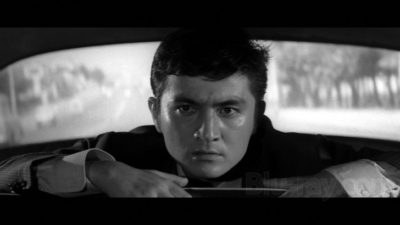
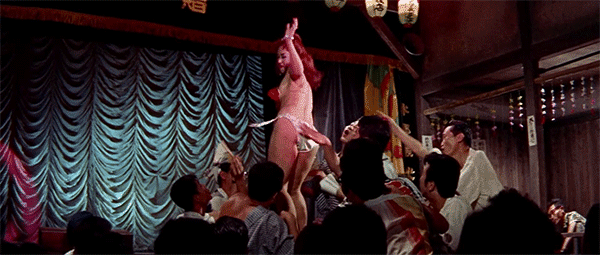

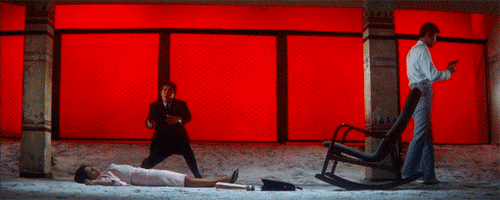

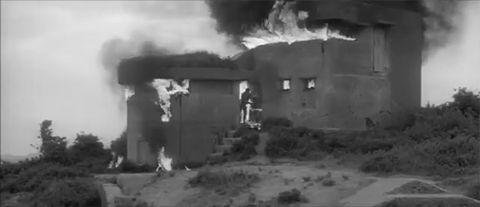




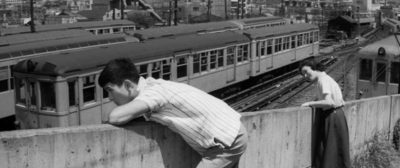
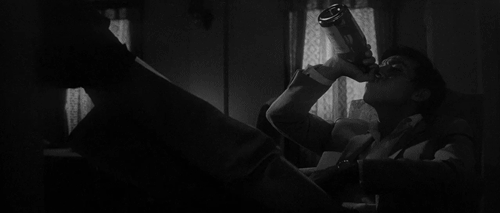

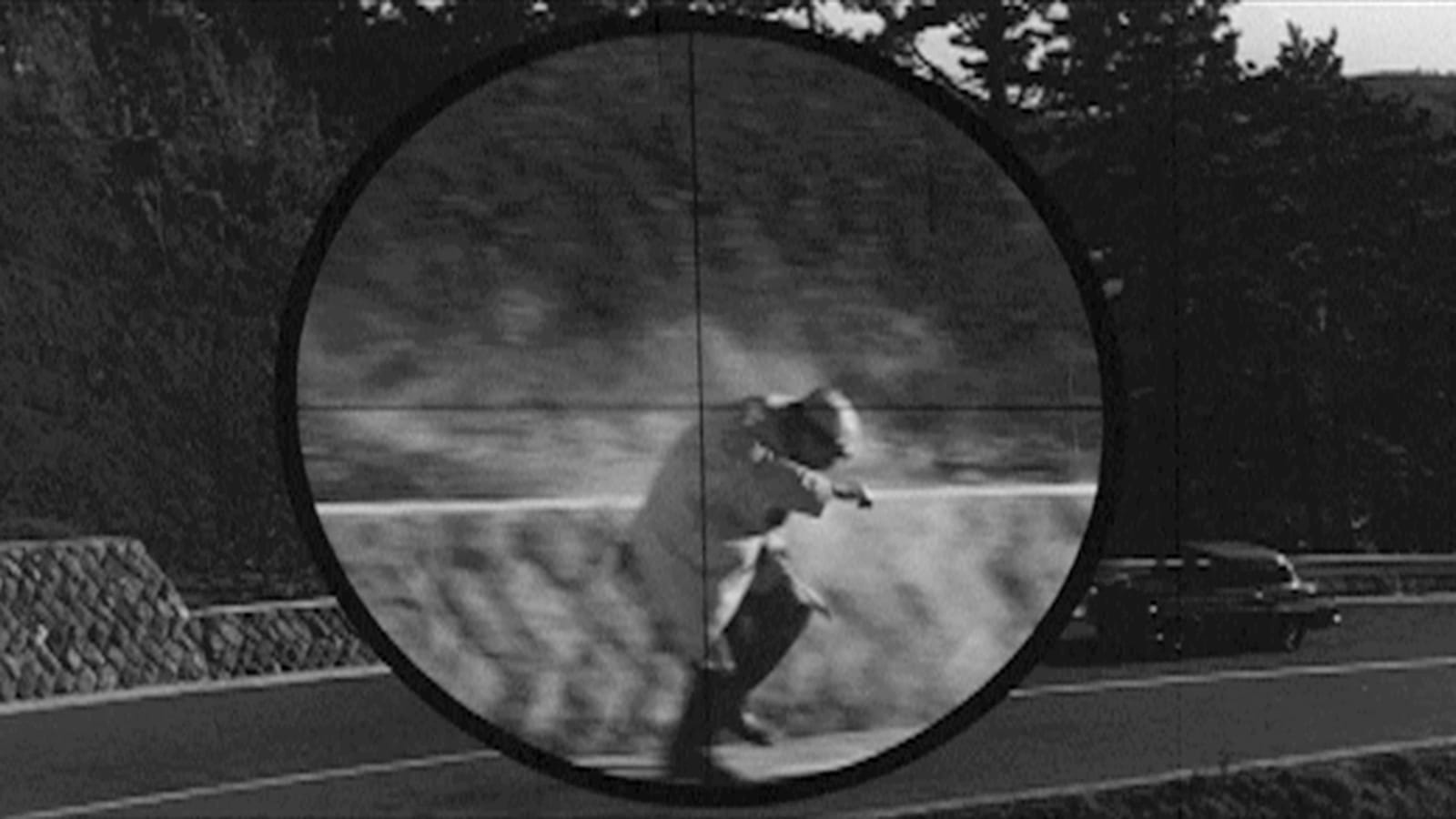
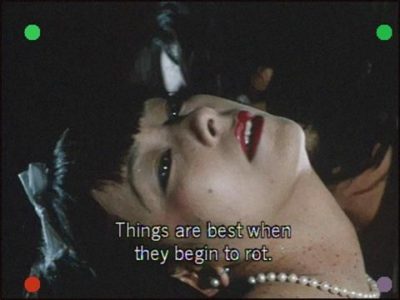

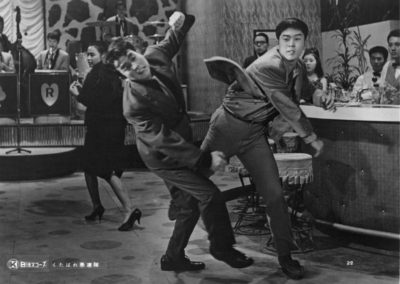


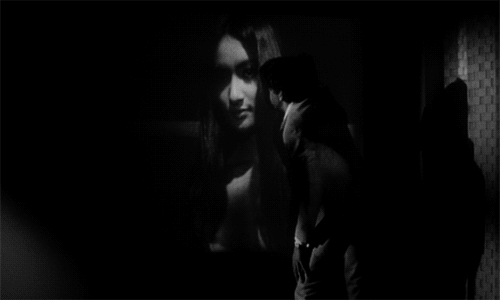
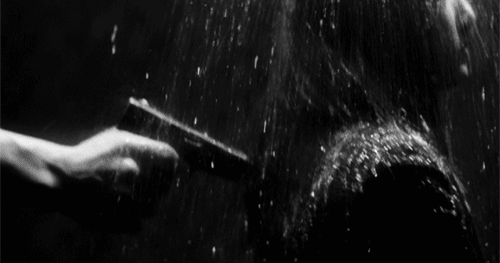
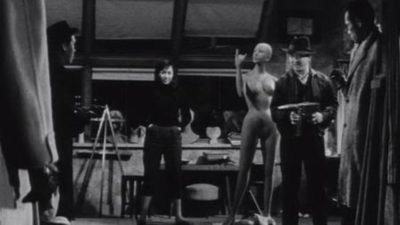
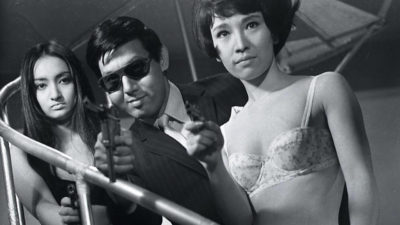
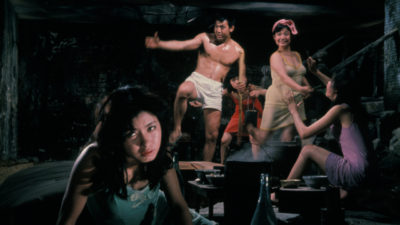
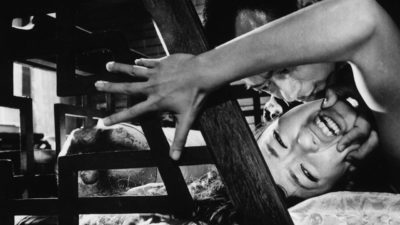
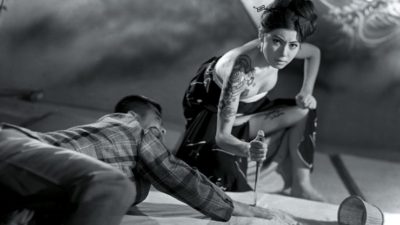

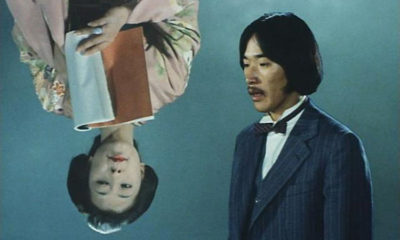
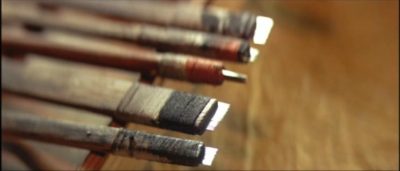

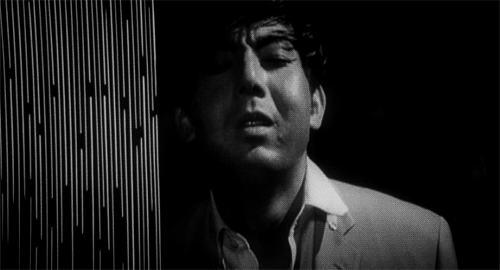




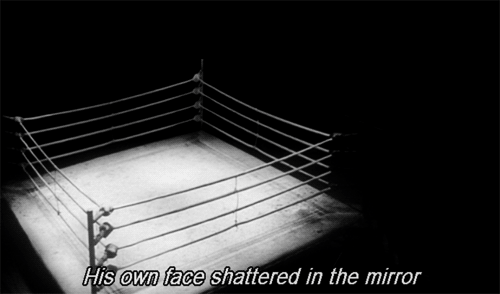
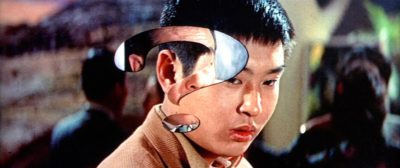
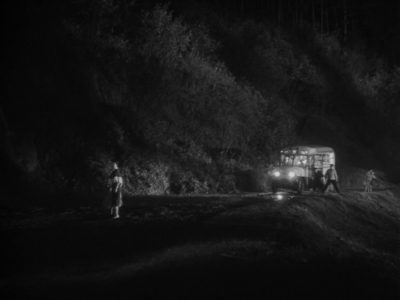
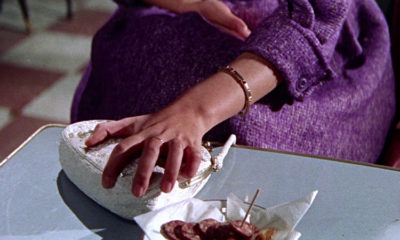
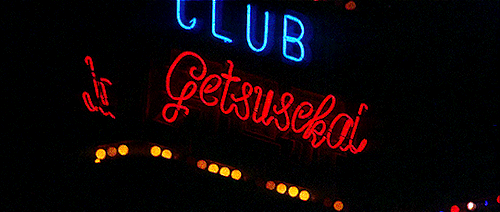
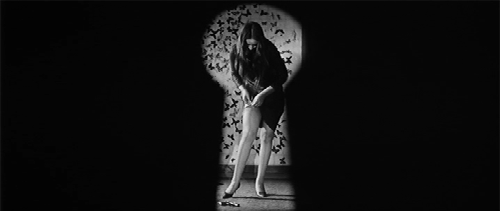
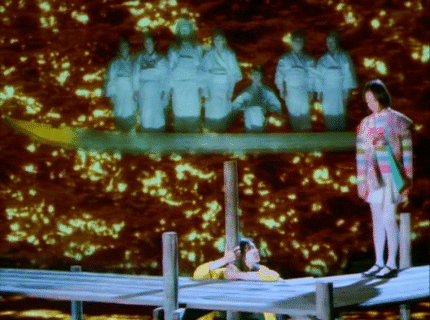
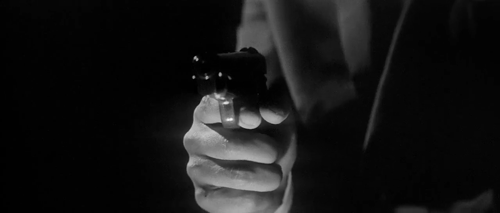
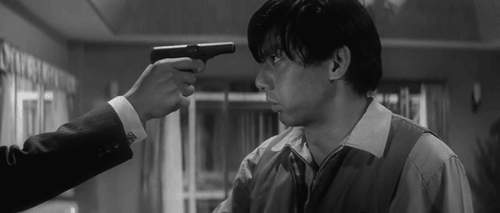

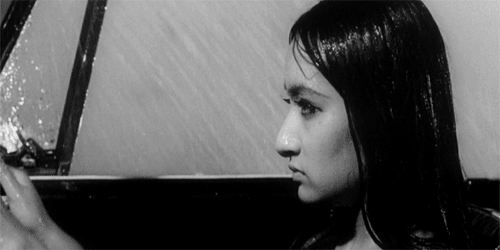
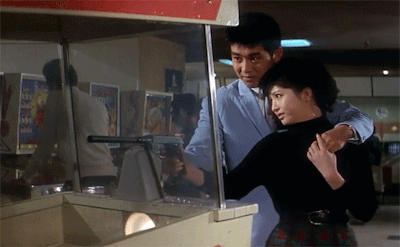
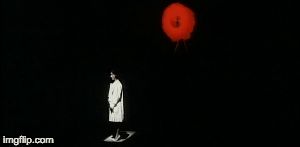

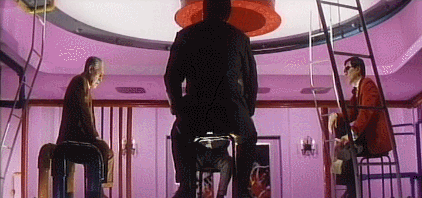


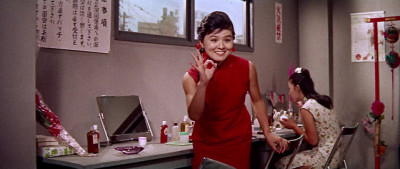
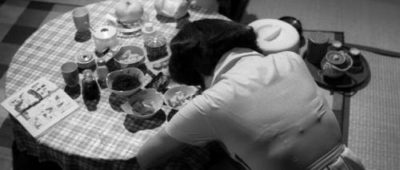
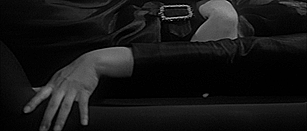
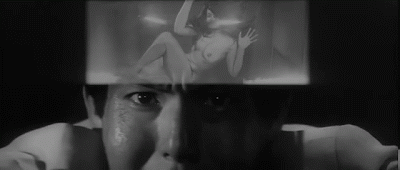
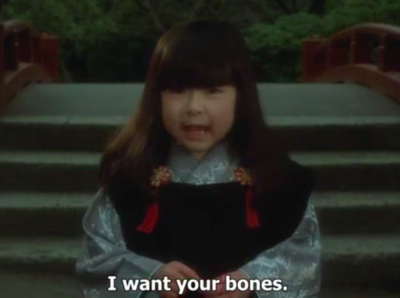



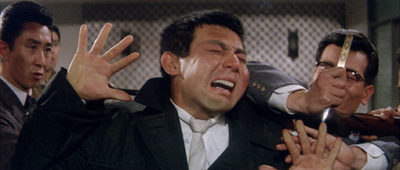
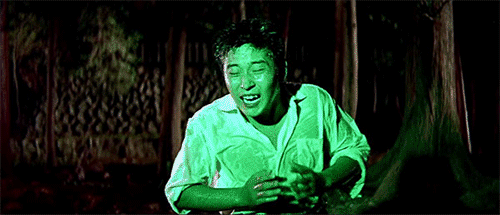
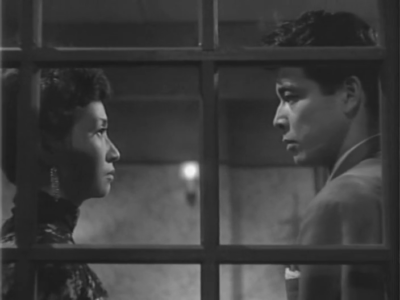

____
Further
Seijun Suzuki @ IMDb
SS @ The Criterion Collection
Action and Anarchy: The Films of Seijun Suzuki
SS @ MUBI
SS @ Letterboxd
SS @ Senses of Cinema
Seijun Suzuki obituary
From Genre Flick to Art Film: Seijun Suzuki’s Branded to Kill and Pistol Opera
Time and Place Are Nonsense: The Films of Seijun Suzuki
Goodbye, Seijun Suzuki
SEIJUN SUZUKI (1923–2017)
Seijun Suzuki, Director Of Delirious Thrillers, Dies At Age 93
The Anarchic Japanese Auteur Who Inspired Quentin Tarantino and Jim Jarmusch
An introductory guide into the world of Seijun Suzuki films
BRANDED TO KILL: JAPANESE CULT DIRECTOR SEIJUN SUZUKI’S DEEPEST CUTS
Seijun Suzuki, an Absurdist Auteur in Hired-Gun Clothing
THE ANTI-COMMERCIAL ODYSSEY OF SEIJUN SUZUKI’S TAISHO TRILOGY
An Ecstatic Legacy: The Psychedelic Noir of Seijun Suzuki
Losing the Plot in the Films of Seijun Suzuki
Rep Diary: Seijun Suzuki
The Visionary Nonsense (and Sneaky Emotion) of Seijun Suzuki
The Silencing of Seijun Suzuki
____
Extra
An interview with Suzuki Seijun
____
Interview
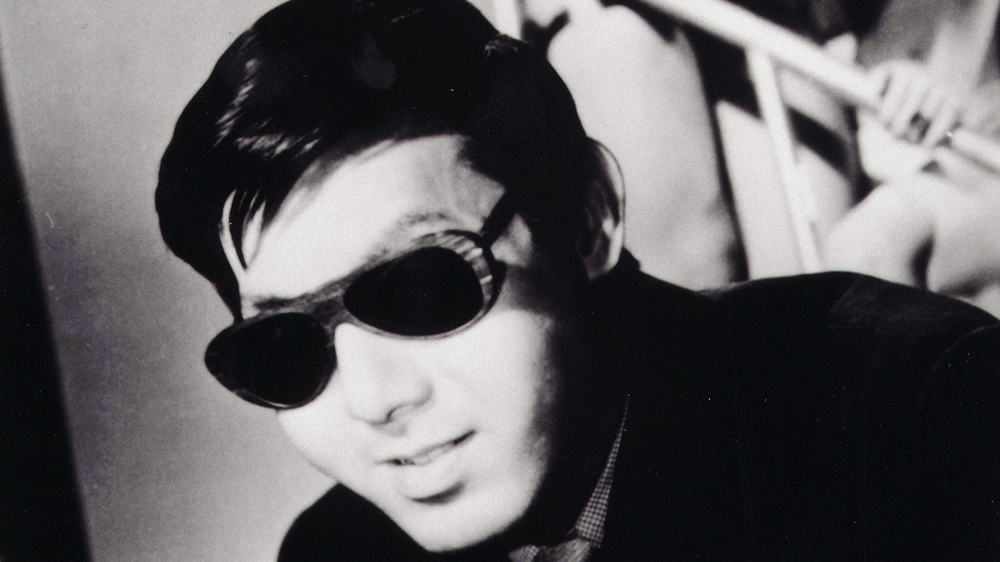
What kind of attraction does the action genre, or more specifically the yakuza genre, hold for you?
It’s not really the genre I’m interested in, but the character of the yakuza or a killer. They wander between life and death. As a character they are more interesting than normal people. They live very near death, so we can describe how they die, where they die, and when they die. You have a wider range of possibilities than you otherwise would if you were depicting a normal person.
That reminds of what one director once told me about his reason for making gangster films. He said that gangsters’ lives are more intense, because their lives are so short. You’re able to show the whole range of human emotion in a shorter period of time and in a more extreme way than with regular people.
I think more simple than that. (laughs)
The visuals in your films are often described as, or compared to, pop art. Do you feel any kind of connection with pop art or any other artistic or aesthetic movement?
When I shoot a film, I often look at pictures, drawings and paintings. Not just pop art, but Japanese pictures as well. The reason is because I want to see the form of these pictures, especially in their depiction of women. I don’t really understand why it’s called pop art in my case. Maybe the result of this way of working turns out to be pop art, but I don’t intend to make it that. It just turns out to be like pop art.
To be honest, the choice of colours and such, there isn’t much significance to them. Generally, a movie is composed of many elements that make a strong impression on the viewer. I call them tricks. I think colour is one of those tricks.
How did you enjoy working with CGI? Those moments fit in very well, their artificial nature mixes well with your visual approach.
I believe that a movie is a handmade thing, so I don’t like new technology so much. If you create a colour on the set, it looks very nice, but if you make it afterwards by computer, then for me it’s something fake. But I’ve experienced for the first time on this film that computer technology can actually be quite useful.
The use of Cinemascope is very typical of your films from the 1960s. So why did you decide to shoot Pistol Opera in the 1.33:1 (or 4:3) ratio? That’s hardly done these days anymore.
It was the idea of the director of photography to use the standard size ratio. He felt that in this format every part of the screen would equally dense with colour.
The music by Kazufumi Kodama has a lot of variety and a lot of influences to it, including jazz and ska.
I use music in moments where the audience might become bored. In this situation if the audience hears a lot of variety in the music, rather than one type, maybe it’s more fun and not so boring for them. So that’s why I did it this way.
Earlier this year, there were two major retrospectives of your work in cinemas in Japan. One of those, the bigger one, was created by Nikkatsu. Does it feel like a vindication of sorts? Because they were the studio that fired you in the 1960s. Do you think: “Now they finally realise that I did make good films”?
(laughs) The best thing for a movie is to have a lot of people come to see it when it’s released. But back then my films weren’t so successful. Now, thirty years later, a lot of young people come to see my films. So either my films were too early or your generation came too late. Either way, the success is coming too late (laughs).
During the 50s and 60s you made a lot of films, sometimes four a year. The last few decades you have been making a lot fewer films. Would you like to work more than you’ve done in recent years?
No (laughs). Because I’m old. To be a film director, the first, second, and third priority is to have physical strength. It’s not a matter of knowledge or brains.
But a lot of Japanese directors, such as Kinji Fukasaku and Shohei Imamura, who are in their 70s have been making films recently that are very energetic and very dynamic.
It’s roujin power! (laughs) Old people’s power! It’s something that’s very happening in Japan recently. So that must be it (laughs).
Your speed of making films in those days, was that because you wanted to, or because of how the industry was structured, the program pictures structure.
I was one of the Nikkatsu contract directors, so it was the company that made me direct films at this pace. Like you said, the program pictures.
Did you enjoy working at this pace?
It was more of a job than getting any kind of enjoyment out of making a film.
Do you enjoy it more now that you make fewer films?
Right now, it’s still a struggle to me. Maybe in a few more years I will be able to enjoy making a film. If it becomes more like a hobby, it’s also more enjoyable to make a film. But it’s very hard to achieve that state, for it to become like a hobby. You need the strength (laughs).
I was told that in the structure of program pictures, films were divided into degrees of importance. The A movie was most important to the studio, so it was closely monitored and controlled. The B movie was a little bit less important to them and the C movie was not important at all. But because nobody cared about him, the C director had the most freedom and he would often make the most interesting film of the three. Which level were your films on and did you benefit from this freedom?
Since I was working for a company, I couldn’t deviate too much from the company’s course. But because my films were in the B category, I had a wider range than an A director. Even if it went off a little bit, it wouldn’t be too much of a problem with them. So in that sense I had a little bit of freedom. More than the A directors.
Clearly you didn’t have that much freedom because a few years later you were fired by Nikkatsu. Then you didn’t make any films for ten years until Story of Sorrow and Sadness (Hishu Monogatari, 1977). What did you do in those ten years? I heard you were involved in anime at some point. You were also a witness in the obscenity trial of Nagisa Oshima’s In the Realm of the Senses, I believe.
I shot commercials, I was involved in animation, the Lupin series. And yes, I was a defence witness for Oshima.
What was your defence argument at the time?
Oh! Well, I hardly remember. (long silence) If you have a book that’s prohibited and individual words are crossed out to censor it, which happened in Japan before the war, the book would lose all its meaning. With the film, the same argument applied. That is what happened to In the Realm of the Senses. So I said that if you take out those scenes, cross them out, the film wouldn’t make sense. It was exactly like the old system of censorship that we had before the war.
In the last ten years or so you also made a number of acting appearances, in particular in Cold Fever, by Icelandic director Fridrik Thor Fridriksson. How did that come about?
When you become over 60, everything you do is okay with everyone. You can do whatever you want. That’s why I started acting. I was invited to be an actor in Cold Fever, so I decided to do it.
Did you enjoy being an actor?
(laughs) It’s better than doing nothing at home! It’s exciting and also, it gives you money (laughs).
Do you look at actors differently since having acted yourself?
I was mainly acting on TV. I was not a professional actor, more like a semi-pro, so my experiences as an actor are not so important. I’m not a perfect actor, but I also don’t surrender completely to the director. I would do what I could, but never go too far from the director’s wishes and I would never talk back to him. When I direct, I always make sure that actors don’t talk back to me. So I just used the same attitude that I always expect from my own actors.
Cold Fever also starred Masatoshi Nagase, who is in Pistol Opera. Any connection between the two or is it a coincidence?
There’s no relation between the two, no.
I believe your next project is going to be a short film that you will be shooting in Paris, starring Sayoko Yamaguchi again. Could you tell how that came about?
The producers invited me to be one of the directors for that project, which is a sort of omnibus film. My sequence is only going to be six minutes long before another director takes over. I believe there are twenty different directors involved.
Why did you accept?
Because my producer forced me to do it! (laughs). Ogura-san kept telling me over and over to accept the offer.
____________
21 of Seijun Suzuki’s 58 films
____________
Underworld Beauty (1958)
‘Underworld Beauty introduces a theme Suzuki would revisit often: the lone wolf attempting to make amends for his past, a debt he’s usually unable to repay. Miyamoto (Michitaro Mizushima), just out of prison, wants to sell diamonds he has stashed away, in order to pay back his friend Mihara (Hideaki Nitani), who took a bullet for him. After the deal goes bad, Miyamoto’s efforts to recover the gems are thwarted at every turn, by his backstabbing former boss; by Akiko (Mari Shiraki), Mihara’s wild sister; and by Arita (Shinsuke Ashida), her artist boyfriend, who swipes the diamonds out from under everyone’s noses. The film is saved by the starkness of its noir-ish cinematography, and Suzuki’s marvelously staged set pieces. Scenes in a mannequin factory recall the final moments of Stanley Kubrick’s debut film, Killer’s Kiss, as the camera pans the eerie fake body parts that litter Arita’s studio, echoing the truly damaged human beings that occupy the movie’s landscape.’ — Pop Matters
the entirety
_______________
The Boy Who Came Back (1958)
‘Seijun Suzuki imbues this youth melodrama, influenced by Rebel Without A Cause, with palpable subtext and visceral violence. An early work but Suzuki is already a master of CinemaScope composition and the tracking shot. He also propels the action with clever edits, such as the scene in the nightclub where he shows Keiko (Sachiko Hidari) getting drunk by the steady build of empty pint glasses on a table. Lead delinquent, Akira Kobayashi, unsubtly plays to the melodrama, and there is an unrequited love triangle subplot which is only unsatisfying because Suzuki builds up the emotional tension so well. But it goes beyond the teen melodrama template with its location sequences showing Tokyo bustling after the end of the American Occupation, and the consequences of the new prosperity and American pop culture undermining traditional Japanese life. Watch for a young Joe Shishido in a supporting role as the delinquent with no redeeming features.’ — Silversaxophone
the entirety
_______________
Voice Without a Shadow (1958)
‘Seijun Suzuki might be best remembered for his surrealist pop art masterpieces from the late sixties or his even less comprehensible art films which followed his return to directing after settling his dispute with Nikkatsu, but everyone’s got to start somewhere and it comes as something of a relief to know that Suzuki was perfectly capable of making a straightforward movie if he wanted to. Voice Without a Shadow (影なき声, Kagenaki Koe) is exactly what it sounds like – a fifties style, US inspired noir however, Suzuki adds his usual flourishes and manages to wrong foot us pretty much the whole way through so that we never end up where we thought it was that we were going.’ — Windows on the World
Trailer
_______________
Age of Nudity (1959)
‘One of the many wayward youth films Seijun Suzuki did early on his career. As usual Age of Nudity doesn’t quite have the weight of some of similar films from the era, but Suzuki shows great empathy for his young characters. Terrific scope framing and only 53 minutes long.’ — Filipe Furtado
the entirety
_____________
Take Aim at the Police Van (1960)
‘At the beginning of Seijun Suzuki’s taut and twisty whodunit, a prison truck is attacked and a convict inside murdered. The penitentiary guard on duty, Daijiro (Michitaro Mizushima), is accused of negligence and suspended, only to take it upon himself to track down the killers.’ — The Criterion Channel
Excerpt
____________
Everything Goes Wrong (1960)
‘Seijun Suzuki’s film, released the same year as Oshima’s Cruel Story of Youth, might not be as polished or thematically resonant, but there’s something about its unvarnished, fly-by-the-seat-of-its-pants quality that feels even more vital to the true experience of youth. Suzuki was coming at this as an outsider, already in his late-30s, but seems, even from a distant, totally in touch with the volatile emotions of youth.’ — Criterion Cast
Trailer
_______________
Tokyo Knights (1961)
‘TOKYO KNIGHTS is a high point in the first five years of director Seijun Suzuki’s career within Nikkatsu’s “Borderless Action” series. Drawing inspiration from Hollywood and the French New Wave, Suzuki’s works for Nikkatsu blended East and West, movie-fueled fantasies and gritty realities of life in postwar Japan. Here, we follow a college student who takes over the family business in the field of organized crime…’ — Nightlight Cinema
Trailer
_____________
The Wind-of-Youth Group Crosses the Mountain Pass (1961)
‘What better subject for Seijun Suzuki’s first foray into colour film than the carnival? The unlikely choice of narrative for Japan’s master of the gangster genre is but one of the quirks that make 1961’s The Wind-of-Youth Group Crosses the Mountain Pass (Tôge o wateru wakai kaze) a standout in the director’s filmography. While it’s a far cry from the slick and violent later works, the film is, if nothing else, a love letter to Japan’s vibrant, wild, and unique festival culture.’ — Eastern Kicks
Trailer
_____________
Teenage Yakuza (1962)
‘Teenage Yakuza is middling work from the master Seijun Suzuki during his middling period. Within a year he’d be entering his most fertile period with truly creative work like Youth of the Beast, Gate of Flesh, and Kanto Wanderer, but for the moment he was still making programmatic gangster and youth flicks for Nikkatsu.’ — Cinema_Strikes
the entirety
_____________
Youth of the Beast (1963)
‘When a mysterious stranger muscles into two rival yakuza gangs, Tokyo’s underworld explodes with violence. Youth of the Beast (Yaju no Seishun) was a breakthrough for director Seijun Suzuki, introducing the flamboyant colors, hallucinatory images, and striking compositions that would become his trademark.’ — The Criterion Collection
Trailer
Excerpt
_____________
The Incorrigible (1963)
‘Nobody does teen melodrama quite like Seijun Suzuki. This is mostly a by-the-numbers delinquency flick but with a third act revelation that gives the conclusion an unearned poignancy. I’ll even give Suzuki credit for the young boy’s recollection of losing his virginity. It’s shot and edited in a disjointed, dreamlike way that makes you doubt the reliability of the author.’ — HotDonkeyBear
Trailer
_______________
Kanto Wanderer (1963)
‘Visually Kanto Wanderer owes much to the style of Kabuki theatre, starting with Katsuta’s sharply painted, gigantic eyebrows. In keeping with the loose allowances of borderless action, Katsuta is, inexplicably, the only character with such garish makeup and yet his eyebrows somehow fall into place in a film with an emotional tone and colour scheme worthy of a Douglas Sirk melodrama. As Suzuki explained to Mark Schilling, “in Kabuki they show everything at once. The interest is in seeing where and how the actors enter and exit […]. The continuity comes from the unity of atmosphere.” For further evidence of Suzuki’s appreciation for Kabuki staging, one need only look to the astonishing depth-of-field in certain scenes in Kanto Wanderer. Narrow streets and alleyways abound in the outdoor scenes, leading out, upward and away from the action in the foreground. For a man who constantly had to direct “on the fly” with minimal resources at hand, Suzuki’s compositions are meticulous. In this film, most of Suzuki’s “special effects” – changes in colour and light; swinging overhead lamps or colourful spotlights – occur in front of the camera in real-time, creating both a theatrical aesthetic and an urgent sense of time passing. The presence of an unabashed spectacle in front of the camera and Suzuki behind it is palpable, particularly during specific scenes of wordless dramatic import.’ — Senses of Cinema
the entirety
_____________
Gate of Flesh (1964)
‘In the shady black markets and bombed-out hovels of post–World War II Tokyo, a tough band of prostitutes eke out a dog-eat-dog existence, maintaining tenuous friendships and a semblance of order in a world of chaos. But when a renegade ex-soldier stumbles into their midst, lusts and loyalties clash, with tragic results. With Gate of Flesh, visionary director Seijun Suzuki delivers a whirlwind of social critique and pulp drama, shot through with brilliant colors and raw emotions.’ — The Criterion Collection
the entirety
_____________
Story of a Prostitute (1965)
‘Volunteering as a “comfort woman” on the Manchurian front, where she is expected to service hundreds of soldiers, Harumi is commandeered by the brutal Lieutenant Narita but falls for the sensitive Mikami, Narita’s direct subordinate. Seijun Suzuki’s Story of a Prostitute is a tragic love story as well as a rule-bending take on a popular Taijiro Tamura novel, challenging military and fraternal codes of honor, as seen through Harumi’s eyes.’ — The Criterion Collection
Trailer
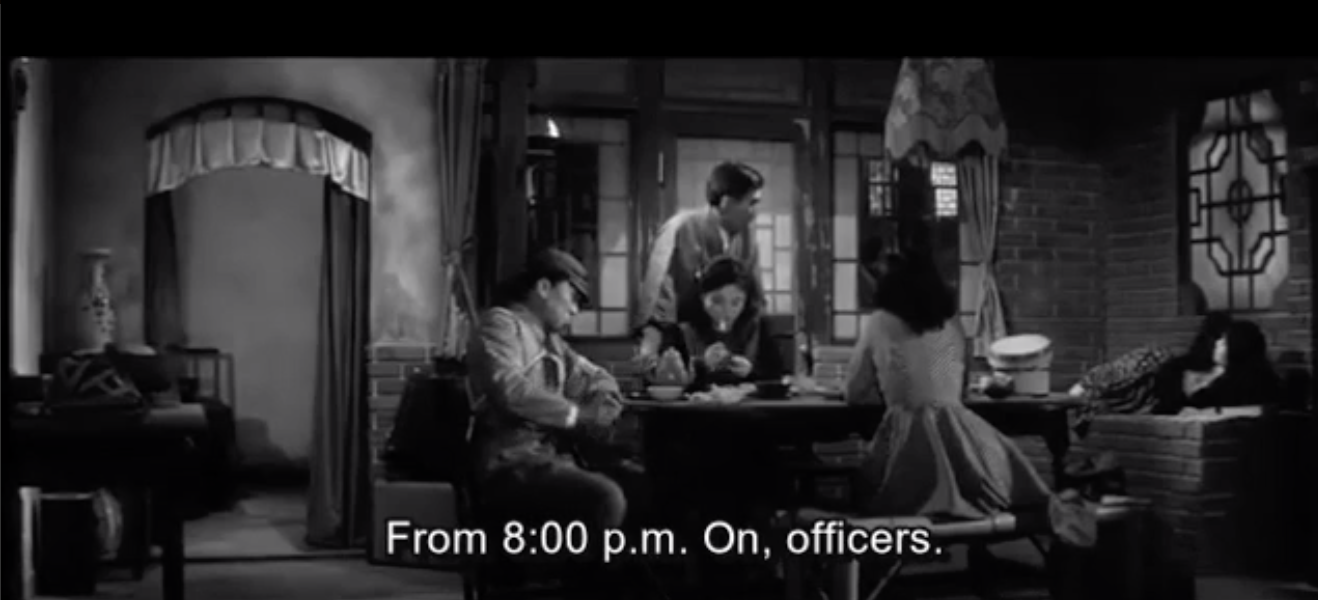
_____________
Tattooed Life (1965)
‘Tattooed Life begins with a parasol wielding Yakuza assassin attacking a rickshaw. It almost looks like feudal Japan until somebody pulls a gun and we’re reminded that it’s the 20th century. Post-shooting, the assassin delivers his bounty to his brother (to pay for his art school education) before getting ambushed in one of the few rickshaw-jacking incidents in film history, and being rescued by his art-student brother. In the aftermath, one brother is marked for death by the Yakuza, and the other brother won’t go to art school with blood on his hands, so they decide the perfect way to deal with such hardships is to become fugitive construction workers in northern Japan . And why not?’ — letterboxd
the entirety
_____________
Tokyo Drifter (1966)
‘In this jazzy gangster film, reformed killer Tetsu’s attempt to go straight is thwarted when his former cohorts call him back to Tokyo to help battle a rival gang. Director Seijun Suzuki’s onslaught of stylized violence and trippy colors is equal parts Russ Meyer, Samuel Fuller, and Nagisa Oshima—an anything-goes, in-your-face rampage. Tokyo Drifter is a delirious highlight of the brilliantly excessive Japanese cinema of the sixties.’ — The Criterion Collection
Trailer
Excerpt
Excerpts
___________
Branded to Kill (1967)
‘Suzuki took the conventions of the Japanese crime film and fashioned them into something authentically strange and disturbing. No moral reflex apologises for the carnage, nor is there a thematic counterweight in the form of intense male bonding, as in the heroic bloodshed genre that flourished in Hong Kong in the 1980s. Doubtless this is why the film has found favour with latter day aesthetes of violence such as Tarantino. Indeed, the film shares many of the formal and thematic concerns of his beloved Spaghetti Western. But unlike Tarantino’s Reservoir Dogs, Suzuki’s film did not find an instant audience of slavering fan boys on its release. Branded to Kill’s stature grew over the years, while Suzuki was inactive as a director for a decade, due to his freewheeling approach to genre material. But modern seekers of termite art and crazed, unqualified violence will find much to admire in this exhilarating film.’ — John A. Riley
Trailer
Excerpt
_____________
Zigeunerweisen (1980)
‘The first of Suzuki’s Taishō Period (1912-1926) Trilogy, Zigeunerweisen flows like a river of blood, calmly but disturbing at the same time. A psychological surreal, dark story full of allusions to ghosts both alive and dead with brief instances of kaleidoscopic horror and madness mainly mystifying death and other condemnable perversions, Suzuki’s new branch of poetic experimentation is one strong psychological examination of marital relationships and extramarital affairs while discussing, by segments, transcendent terms such as life, mortality and Sarasate’s violin composition. Haunting and spiritually arresting with an unforgettable closure, Zigeunerweisen marks the director’s trajectory towards more kaleidoscopic, metaphysical reflections through a style completely new to Suzuki followers but incredibly rewarding when read between lines.’ — Edgar Cochran
Excerpt
_______________
Kagero-za (1981)
‘This is even more oblique than Zigeunerweisen, using a fairly simple love triangle as the jumping off point for a complicated, messy exploration of Westernization, eroticism, and Japan’s Taisho period. Suzuki pulls out and refines all of the tricks from his Nikkatsu days, hiding all sorts of perversity inside the shell of a love story. The final result is even more poetic and disorienting than its predecessor, as our fictional characters are rendered as characters in a children’s theatre production that comes crashing down at the moment of emotional release.’ — Evan
Trailer
Excerpt
_____________
Capone Cries A Lot (1985)
‘In this surreal comic confection, a traditional naniwa-bushi singer moves to Prohibition-era San Francisco. He goes in search of Al Capone, whom he mistakenly believes is president, hoping to impress the gangster with his singing and popularize the art form in the States. Filmed mostly in an abandoned amusement park in Japan, Suzuki’s vision of 1920s America is an anarchic collage of pop culture images, from cowboys to Charlie Chaplin. One reason Capone is so rarely seen is that it reflects the racial attitudes of the time in which it is set by including, for example, a minstrel band in blackface. Such discomfiting images are balanced by scenes featuring an actual African American jazz ensemble that joins the film’s hero in jam sessions mixing blues, jazz, and naniwa-bushi.’ — Harvard Film Archive
the entirety
__________
Yumeji (1991)
‘YUMEJI is the final film in youth-gone-berserk auteur Seijun Suzuki’s acclaimed TAISHO TRILOGY. Sensual and absurdist, it spins a ghost story around the character and work of real-life painter and poet Yumeji Takehisa (1884-1934). The eponymous character (conjured by Suzuki as a chronic philanderer and dreamer played by former rock star Kenji Sawada) is plagued with ideals of perfect beauty and the terror of his own demise. He falls in love with women but can never capture their hearts. He is constantly escaping his rivals but can never face them down. As the film opens, Yumeji is on a scenic trip to Kanazawa, where he plans to meet Hikono (Masumi Miyazaki), his lover. Instead, he falls for Tomoyo, a recent widow whose husband, Wakiya (Yoshio Harada), was slain by the murderously jealous Onimatsu. Complications ensue when Wakiya returns from the dead; Onimatsu is understandably distraught. Yumeji is not deterred, however, setting out to seduce Tomoyo while avoiding the rages of Wakiya and Onimatsu as well as a phalanx of ghosts, apparitions and nightmares.’ — Fandor
Trailer
Excerpt
*
p.s. Hey. Marcus Mamourian has written a cool, smart piece about ‘Zac’s Drug Binge’ @ Book & Film Globe if anyone’s interested. Here. ** JM, Hey, J. Oh, my great pleasure. It got huge traffic. Take it easy, and thank you a ton again. ** elizabeth, Hi, elizabeth. Very nice to meet you. Thank you for coming in. Please do so anytime. ** Shane Christmass, It’s the ‘it’ post. Excited to get their books and get to know their thing(s). I’ll try to find ‘Faceless in Nippon’, thanks. I dig your launch idea, duh. Great to find a new force, and that Evan guy sure seems like one. ** David Ehrenstein, Curious image there. I can’t solve that conceptual puzzle right now, but I will. ** Misanthrope, Optimistic but level headed. Seems like the goal. You never, never know. Training hires does sound fun. Were they … trainable and now trained? ** _Black_Acrylic, Morning, Ben. ** Steve Erickson, Hi. Josiah lives in New Zealand, and the press is based in Portland. He’s one of their authors. Everyone, From Steve’s brain to your ears. Steve: ‘I wrote a song today called ,a href=”https://callinamagician.bandcamp.com/track/the-suspended-vocation”>“The Suspended Vocation”. I never understood what suspended chords are till very recently, and I decided to use them in a song, hence the title, but “Hypothesis of the Stolen Painting” and “Three Crowns of the Sailor” will be my next titles! Huh, ‘Antebellum’ sounds very unappetising. What’s up with this grab bag half-assed pomo-wannabe mainstream film crap. Refn, etc. Bleah. I still haven’t been to the movies even though I can. But the annual L’Etrange Festival where ‘LCTG’ had its world premiere just started so that might get me in. Curious to see how the safety/distancing things work since France is very ‘to the letter’ about that stuff. ** Okay. Today I hand the blog over to the juicy oeuvre of Seijun Suzuki. Do you know his films? Pretty cool stuff, I must say. Urging you to have a longish look and taste. See you tomorrow.




 Now available in North America
Now available in North America 
I am yet to find a Seijun Suzuki film I don’t like, they’re all great. Suzuki and Jean-Pierre Melville are two of my favourite directors.
Here’s my self fuck piece if you’re interested: https://selffuck.help/2020/07/04/hprrible-by-shane-jesse-christmass/
Here’s Dale’s book btw: https://expatpress.com/product/faceless-in-nippon-dale-brett/
BTW you having any involvement with this 50th anniversary of Eden Eden Eden thing?
Seijun Suzuki’s juicy oeuvre sounds absolutely fascinating! I love some of the stills you’ve posted, especially that gorgeous one ‘Things are best when they begin to rot’. Your YouTube link to The Boy Who Came Back (1958) seems to be the complete film? In which case I’ll watch it tonight. Thank you!
I hope the little toe is healing up properly…
If you must see one of his films I recommend “Branded To Kill”
Steve, did you ever meet Raul Ruiz? He was a treasure.
Marge is 101 today
IT’S CRUNCH TIME! PLEASE contact me about the DVDs, BOOKs and CDs I have for sale! STAT!
Suzuki’s work seems right up my alley. Branded To Kill has now been added to my DVD rental list on David’s recommendation, so he may get the blame if it’s not family viewing haha.
@ DC, thank you for checking out last week’s episode of Play Therapy! I’m very happy and excited about this project.
He’s a great filmmaker. If you live in the U.S., the Criterion Channel has quite a few of his films streaming at the moment. All of them are pretty great.
Dennis, You had me at “B-movie.” 😀
Now, he’s on to the car thing again. Ugh. Hahaha. Never a day goes by without a little David excitement. 😀
Yes, thanks, the training went well and it was a good time. We started early, which gave us more time for questions and stuff, so that made it even more fun. I always start with, “Proofreading is the most fun you’re going to have in your job,” and then give them some horror stories to scare the shit out of them, hahaha. But they get it, and the training really does make their job and mine a lot easier and seamless.
Just as a reminder, the way we proofread is they send me the “clean” document that has all the updated changes and I read it aloud word for word and punctuation mark by punctuation mark while they follow along on their marked up copy. I’m beginning a 103-page document tomorrow that’ll take a number of days to complete. We’re gonna do four hours a day until we’re finished. Then I’ll mark it up and send it on.
It’s actually more fun than it sounds.
I remember when I first discovered Seijun Suzuki. It was back when Arrow films (UK) took over Tartans old collection and re-released Branded to Kill on Blu-ray. It completely blew my mind that cinema could be this stylish, and given it was the sixties, the techniques used are incredible.
Anyway, this also lead to me searching out more of his films, as well as moving on to find classics such as Female Prisoner Scorpion and Blind Woman’s curse (both starring Meiko Kaji). If you’ve never watched them, then I’d highly recommend giving them a try. Equally, Lady Snowblood is one of my all-time favourites.
Great post and as informative as ever.
Sooper-Cooper!!!!
How are things buddy? Very trippy Seijun Suzuki day – thanks for, as always, attending to my under-cultured brains! If by “cultured” we don’t mean “fermented” – they’re *definitely* fermented. Think “we have abnormal bacterial growth in the left temporal lobe chief, lock the safety valves, this is not a drill” level. In fact speaking of bacteria, I have 3 jars of fresh kimchi I just made. It’s gross-looking, foul-smelling, and heavenly-tasting haha. Bet you’d love it! Hey, you should do a kimchi day.
So what’s going on then? Is this whole “thing” getting boring for you yet? I’m well at the boring stage now I can tell you that. Christ. Get me the fuck outta here already. I was even longingly thinking about my original schedule of the year and wishing I could as planned be disembarking across the pond right now and heading to happycow to find the best anti-jetlag veggie burger in town. Man. I even miss customs officers!! What’s happening to me?!
@David–No, I never met Ruiz. He rarely came to NYC when his films were shown here.
Suzuki’s a great director, with his eccentricity extending into his final two films. Wong Kar-wai used “Yumeji’s Theme” to great effect in IN THE MOOD FOR LOVE. PISTOL OPERA is as good as his best ’60s work. Thanks for posting so many complete films! I didn’t know they were freely available for online viewing.
I liked DRIVE but otherwise don’t really care for Refn. However, people tend to either love or hate his work, and it mostly just leaves me apathetic. I’ve read very good word on his Amazon limited series TOO OLD TO DIE YOUNG from critics like Adrian Martin, not just the usual edgelord cultists, although I can’t work up any enthusiasm for watching 10 hours of his work.